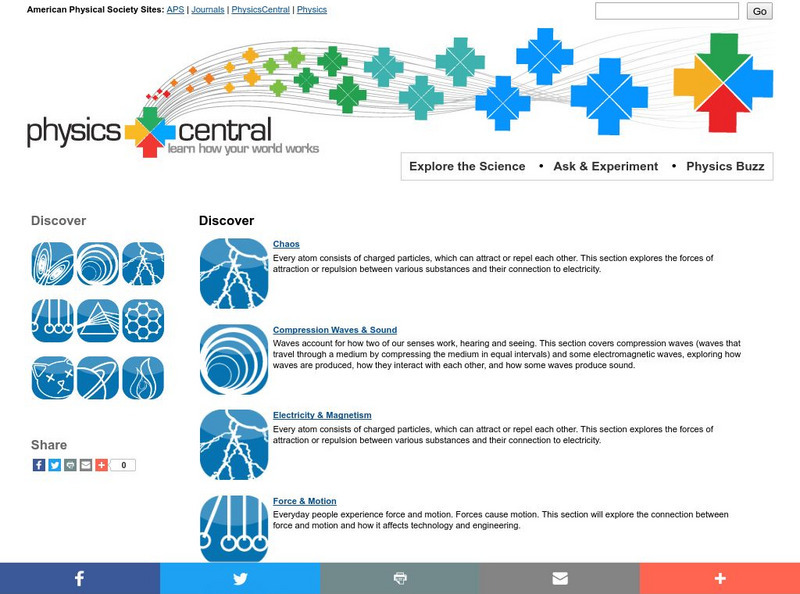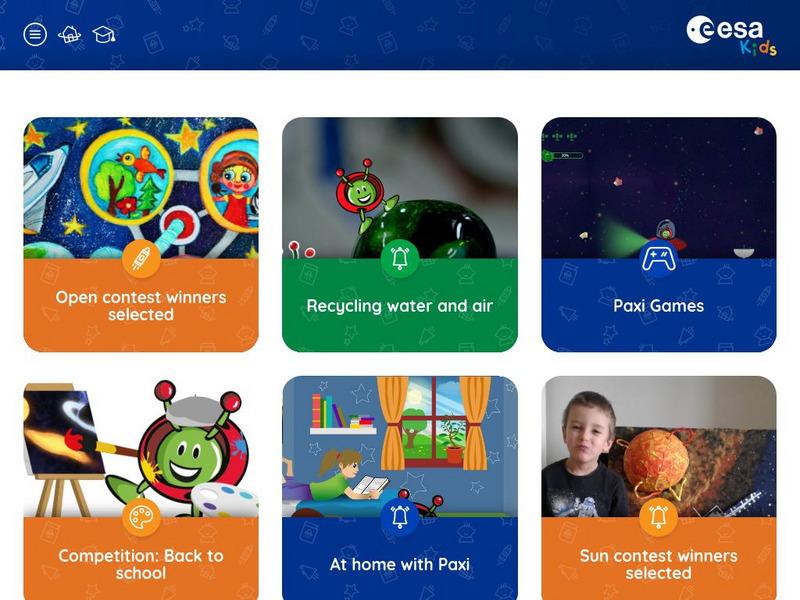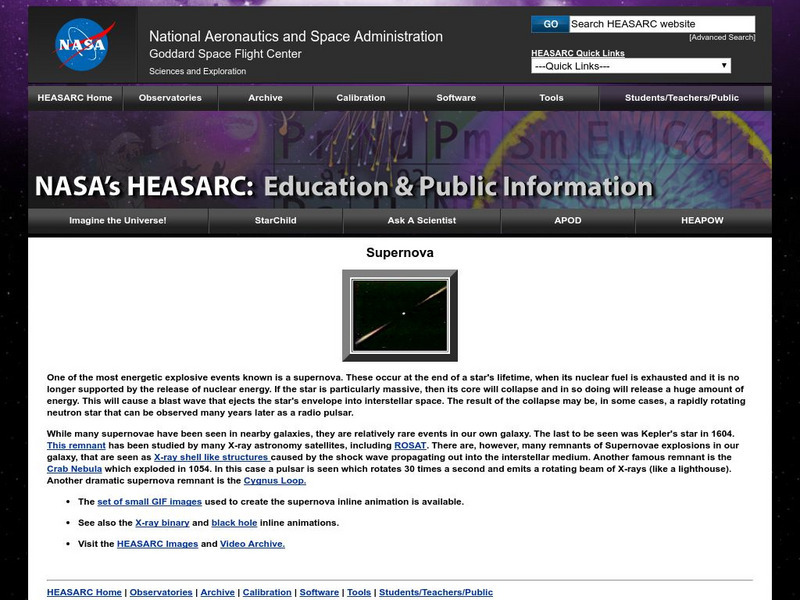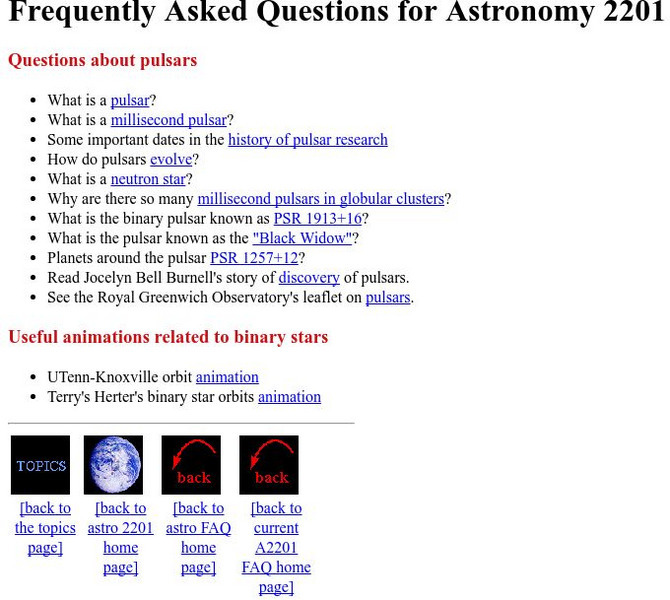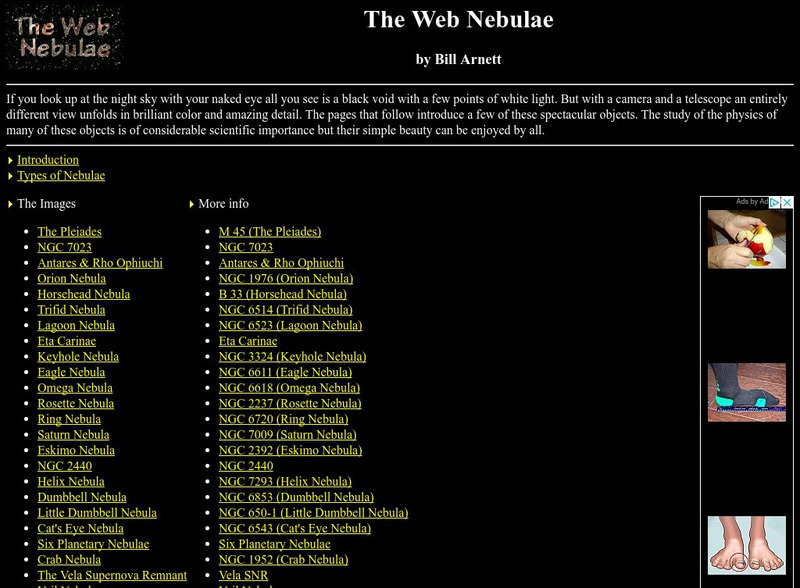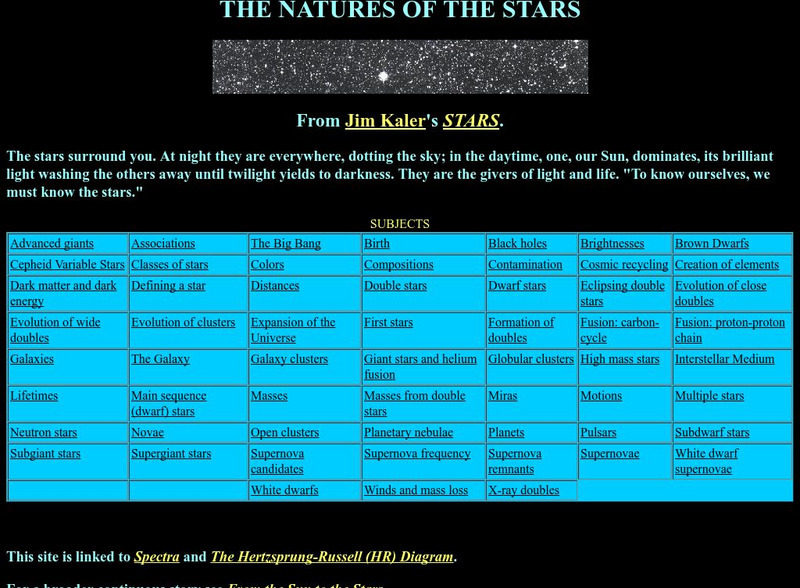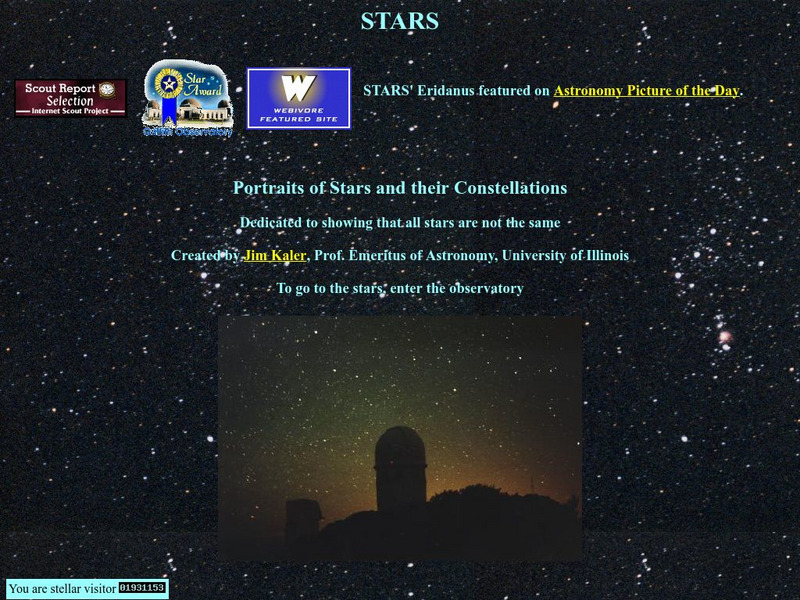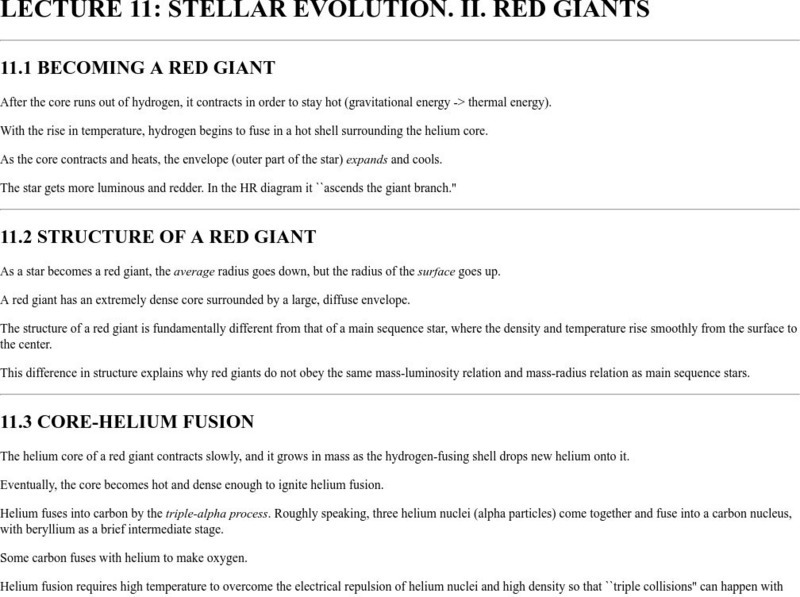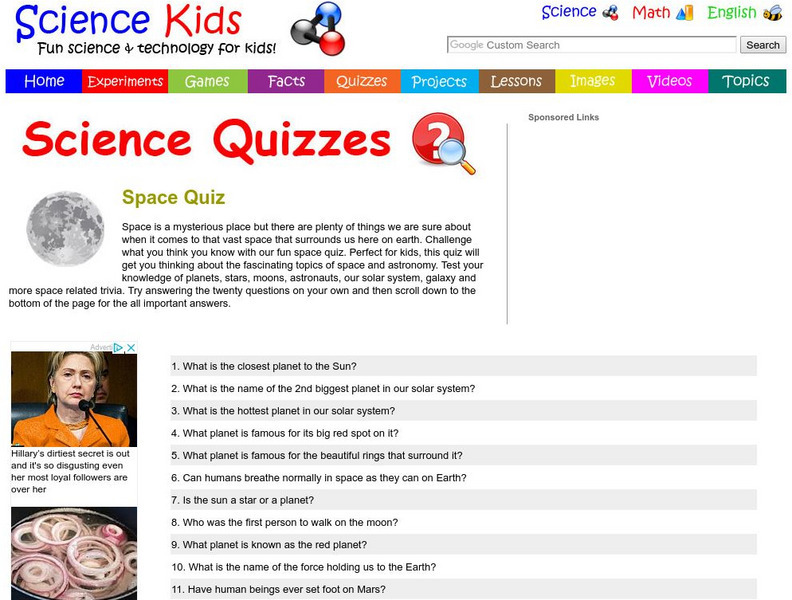Physics Central
American Physical Society: Physics Central: Discover Homepage
Link to nine major physics topics and dig deeper into the content. Find out about the work of scientists in each field and see example physical science experiments.
European Space Agency
European Space Agency: Esa Kids
Multilingual site with articles, news. images, games, and activities about the universe, life in space, the Earth, space exploration, and related topics.
NASA
Heasarc: Supernova
Describes the most energetic explosive event in outer space: the supernova. Includes animation of a supernova.
Cornell University
Cornell University: Astronomy: Frequently Asked Questions
Definintions for pulsars, millisecond pulsars, the evolution of pulsars, neutron stars and "Black Widows." Features related links.
Extreme Science
Extreme Science
Explore the science behind the "extremes" in our world. Organized into sections on earth science, the animal kingdom, technology, and space science, this site opens your eyes to giant creatures, amazing technological advances, vast...
E-learning for Kids
E Learning for Kids: Science: Indian Ocean: What Are Mass Amd Weight?
Join Maria and Boris the Astronaut in their journey. Learn about mass, weight, and gravity in space.
PBS
Pbs Learning Media: Earth and Moon
Students are asked to compare and contrast the earth and the moon.
PBS
Pbs Learning Media: Moon Movement
Students are asked to explain why the moon appears in this particular form in the video clip.
Scholastic
Scholastic:magic School Bus Themes Index
Magic School Bus cross referenced by themes to provide quick access to many activities and references.
Nine Planets
Nine Planets: The Web Nebulae
This site from Nine Planets provides introductory material about nebulae, information and images of several types of nebulae, information on Edwin Hubble, and additional related sites are provided.
University of Illinois
University of Illinois: Stars and Constellations: Neutron Stars and Pulsars
This resource provides a brief description of the relationship between a neutron star and a pulsar. It details the pulsing rate and death of a pulsar.
University of Illinois
University of Illinois: Stars and Constellations
A large collection of information about and photos of the starts and constellations in the sky.
University of Oregon
The Electronic Universe: Ccd Images of Planetary Nebulae
Basic characteristics of planetary nebulae and the relationship to stellar evolution is presented along with many detailed images.
Next.cc
Next: Area
Investigate how to measure the total flat space that something takes up by engaging in the activities provided. Includes links to explore related sites pertaining to area.
Ohio State University
Ohio State University: Red Giant Star Lecture Notes
Describes how a star becomes a red giant, the structure of a red giant, core-helium fusion, lifetime predictions, and the position on the HR diagram.
Science for Kids
Science Kids: Science Quizzes: Space Quiz
A twenty-question quiz covering knowledge of space. Good for test review or for checking students' general knowledge.
Society for Science and the Public
Science News for Students: So Many 'Earths'
Article reports on the recent discovery that many suns in the universe host "Earth-like" planets. Includes a vocabularly list.
Minneapolis Institute of Arts
Arts Connect Ed Artist's Toolkit Encyclopedia: Space
An interactive site that explores the elements and principles of visual art through the artist's toolkit. This entry from the artist's encyclopedia on space includes information on types of space, real space, and perspective.
Minneapolis Institute of Arts
Arts Connect Ed Artist's Toolkit: Positive and Negative Space
An interactive site that explores the elements and principles of visual art through the artist's toolkit. This lesson is on positive and negative space, and the artwork studied is from Katharina Fritsch.
TED Talks
Ted: Ted Ed: Dr. Sally Ride on Dumb Questions
These days, just about every space mission has women on it. It's just not a big deal. But in 1983, it was very much a big deal- that's the year Sally Ride became the first American woman in space. [7:05]
TED Talks
Ted: Ted Ed: The Fundamentals of Space Time: Part 2
In this second installment of a three-part series on space-time, CERN scientists Andrew Pontzen and Tom Whyntie use a space-time diagram to analyze the sometimes confounding motion of light. [4:50]
TED Talks
Ted: Ted Ed: A 3 D Atlas of the Universe
Carter Emmart has been coordinating the efforts of scientists, artists, and programmers to build a complete 3D visualization of our known universe. He demos this stunning tour and explains how it's being shared with facilities around the...
TED Talks
Ted: Ted Ed: Where Does Gold Come From?
Did you know that gold is extraterrestrial? Instead of arising from our planet's rocky crust, it was actually cooked up in space and is present on Earth because of cataclysmic stellar explosions called supernovae. CERN Scientist David...
TED Talks
Ted: Ted Ed: Will Future Spacecraft Fit in Our Pockets?
When you picture a rocket, you might imagine a giant ship carrying lots of fuel, people and supplies. But what if the next wave of spacecraft were small enough to fit into our pockets? Dhonam Pemba details the future of microspacecraft,...


